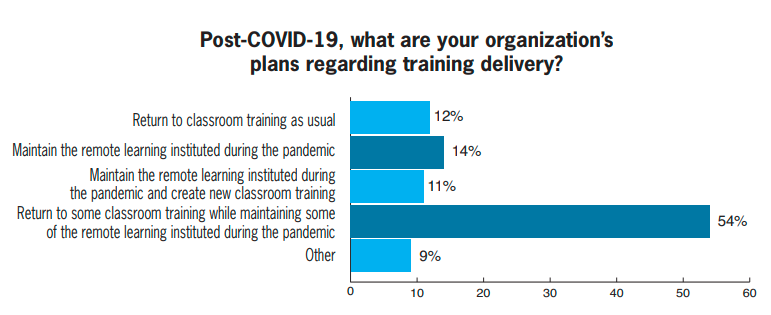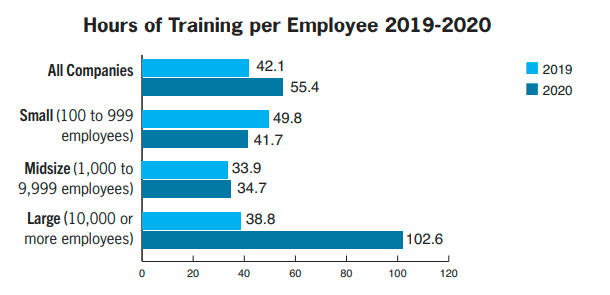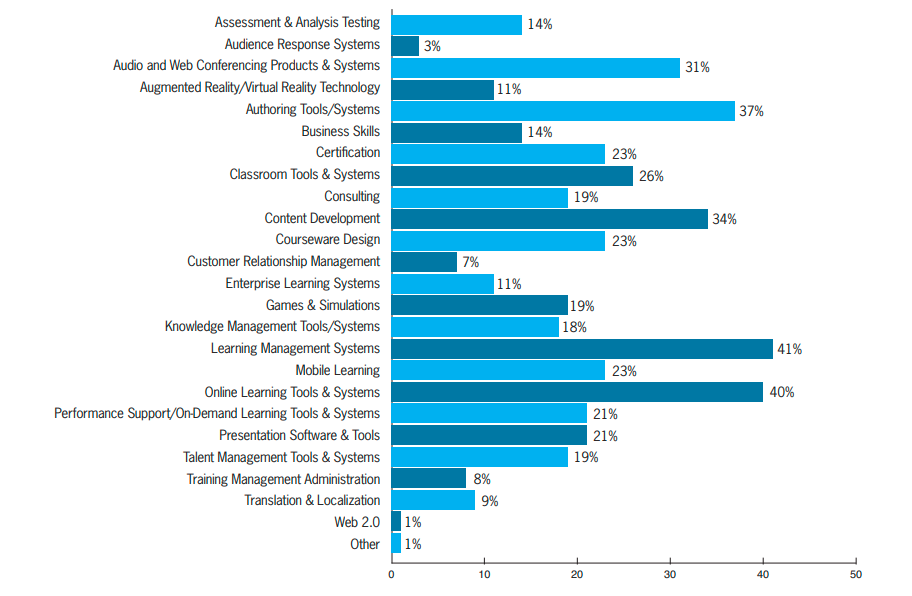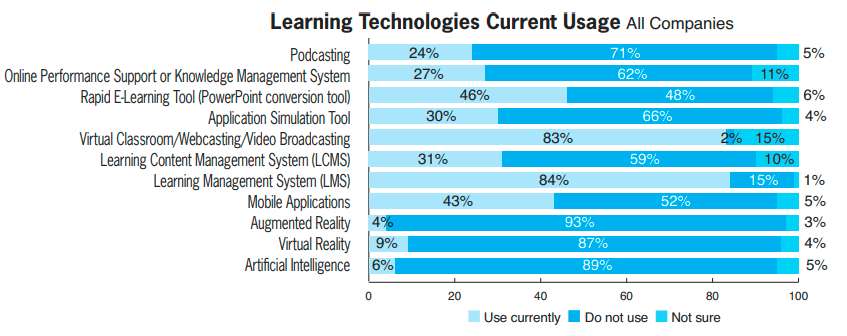
USA: Training Market Report 2020

How has Covid-19 affected the U.S. corporate training market? Data on 2020 training budgets and trends.
2020, likely due to the pandemic, saw a slight decline in training spending in the US. That's the finding of the 2020 Training Industry Report, now in its 39th edition.
The study, which surveyed U.S.-based companies and educational institutions with more than 100 employees, analyzed training data in terms of budgets, staffing and programs.
Training Spending 2015-2020
In terms of budgets, 2020 saw a slight decrease in total training spending, defined as the combined costs of training, technology, and staff salaries.
The most significant decline was in training staff salaries, which fell nearly 18 percent to $42.4 billion, as employees were laid off or laid off.
The only budget that has seen an increase is that for external products and services (meaning products, technology, consulting activities, etc.), which has increased from $7.5 billion to $10.7 billion.

Training Spending Per Learner
Overall, companies spent an average of $1,111 per learner in 2020 (compared to $1,286 in 2019). While spending less per learner, they provided more hours of training than in the previous year. On average, employees received 54.4 hours of training, compared to 42.1 hours in 2019. Large companies provided the most hours of training: 102.6.

Training delivery modes
Regarding the modes of delivery, 2020 saw a strong increase in distance learning, thanks to which it was possible to continue corporate training plans despite the blockage of classroom training.
Looking ahead, the majority of companies (54%) said they plan to maintain a combination of classroom and online training. About 12% said they would return to classroom training as usual, while 14% said they would maintain distance learning.

Mandatory or compliance training continued to be conducted primarily online, with 92% of companies conducting it partially online and 42% entirely online. eLearning is also frequently used for interpersonal skills training (62%), IT training (60%), and management training (58%).
Learning technologies
With respect to the technologies used, learning management systems are the most widely used (84%), followed by videoconferencing and virtual classroom systems (83%).

About 95% of large companies currently use LMSs, compared to 75% of small companies. The least used technologies remained the same as the previous year:
- Virtual reality (9%)
- Artificial Intelligence (6%)
- Augmented reality (4%)
With respect to these new technologies, large companies are more inclined to experiment: about 17% of large companies already use virtual reality and artificial intelligence.
Training outsourcing
2020 saw an increase in average training outsourcing spending: $417,375, up from $378,490 in 2019. An average of 11% of the total training budget was thus spent on outsourcing in 2020 compared to 8% in 2019.
The most outsourced services were learning management systems (LMS), while student support and LMS administration were largely handled in-house (83% and 81%). Finally, in terms of custom content development, the larger the company, the greater the outsourcing.
Spending Intentions 2021
When it comes to spending intentions for 2021, most respondents indicated an intention to invest their budget in purchasing or renting LMS systems (41% vs. 31% the previous year), online training tools and systems (40%), authoring tools (37% vs. 34% the previous year), and video conferencing systems (31% vs. 21% the previous year)

Translated with www.DeepL.com/Translator
Did you like this article? Sign up for the newsletter and receive weekly news!
Subscribe to NewsletterComments:
No comments are in yet. You be the first to comment on this article!